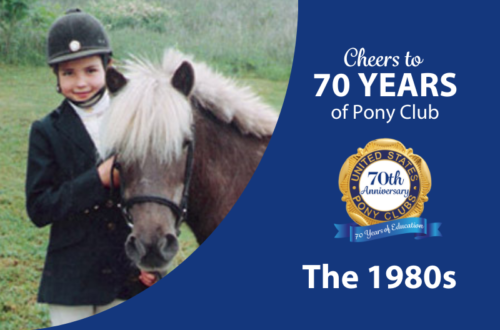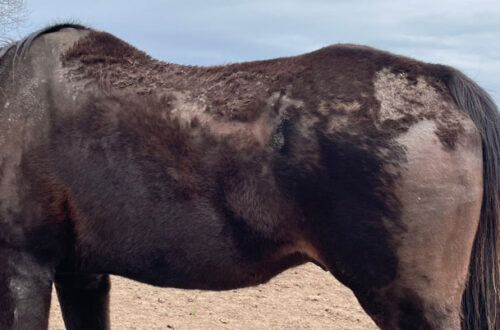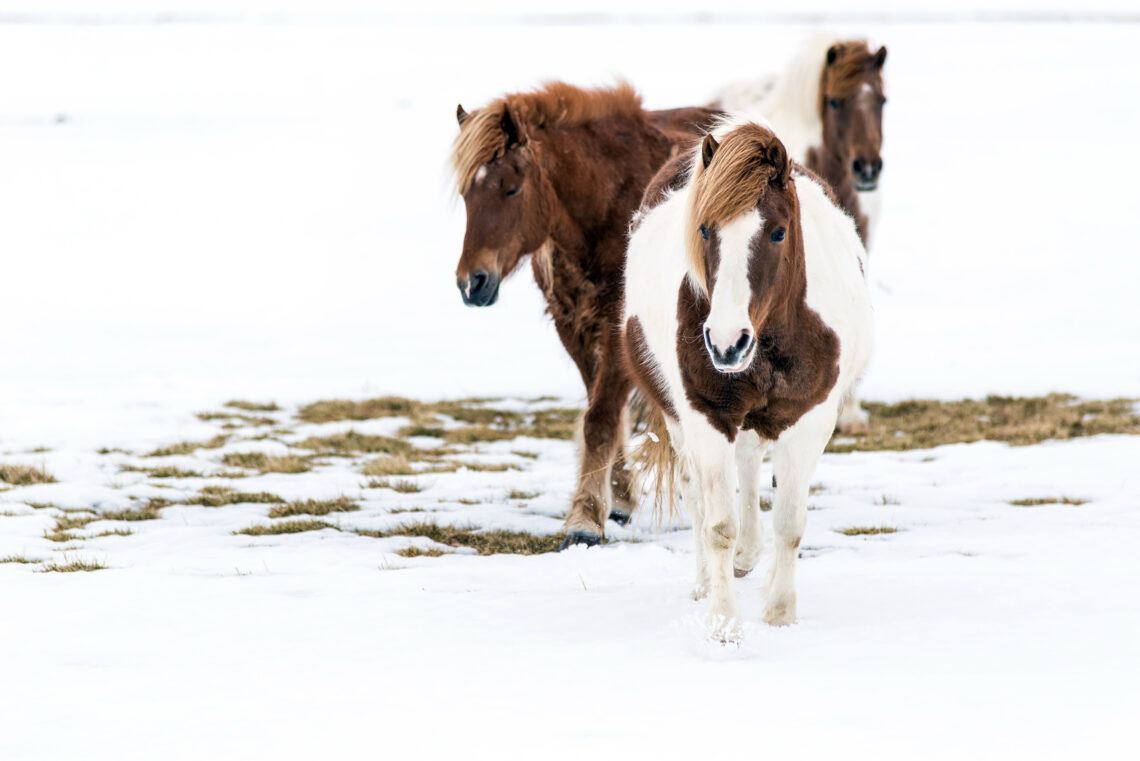
How to Extend Your Horse’s Hay Supply and Forage Alternatives
Provided by Triple Crown Nutrition
Extend your hay supply with these hay-stretching tips and forage alternatives.
Hay, or another source of fiber, is absolutely necessary for the horse to maintain a healthy and properly functioning digestive tract. But providing your horse with high-quality hay year-round can be a challenge due to weather factors. Many horse owners have already been working hard to locate enough quality forage to last the winter and are combating hay shortages and high hay prices. Incorporating forage alternatives into your horse’s diet can be a great way to improve the quality of hay being fed, stretch your hay supply, and ensure that your horse’s daily fiber requirements are being met.
Why is Fiber so Important for Horses?
Horses should be provided with 1.5-2% of their body weight in forages and roughages. Horses have a natural desire to graze throughout the day, so they must have a high-fiber diet. Horses living out on pasture may graze 10-17 hours per day. Slow consumption of pasture, hay, and other forages fulfill both physical and psychological needs.
Physically, optimal digestion and fermentation require a slow-feeding approach of adequate fiber—or colic, gastric ulcers, increased dental issues, and too much weight gain can result.
And psychologically, if horses aren’t able to consume forage slowly, they can develop all sorts of behavioral issues out of boredom.
The horse’s hindgut is home to billions of microbes that utilize fiber and transform it into energy. In addition, horses are classified as hindgut fermenters, and their normal gut function is dependent on an adequate fiber supply. Fiber provides bulk and helps with the passage of food through a complex digestive tract. Without adequate fiber, horses are prone to digestive issues such as colic and gastric ulcers.
Tips for Stretching Your Horse’s Hay Supply
- Make the most out of your pasture by grazing, rotating, and fertilizing your pasture to help it last through the warm seasons. As pasture quality declines heading into winter, you will need to begin transitioning your horses to your hay supply. Take time to gradually add in hay and increase the quantity over several weeks. Feed the amount that is just right for each of your equines.
- Equine nutritionists recommend getting your hay analyzed so you can use the results to calculate how much hay each horse needs. Your local agricultural extension office may be a helpful resource for information about this process. Reach out to an expert, such as your vet, an equine nutritionist, or the pros at Triple Crown Feed for help tailoring a feed program that works with your hay to ensure your horse’s daily nutrient needs are met. To grab a sample of hay for testing, see “How to Take a Hay Sample,” on page 28.
- Proper storage of hay is essential to avoid mold and reduce waste. Also, always feed your oldest hay supply first and mix in any new supplies over a seven- to 10-day transition period, and always check over the hay for mold, insects, and foreign objects before feeding.
- Use a feeder to reduce hay waste, and consider using a hay net to slow down how fast your horses consume their hay. The amount of hay you can save by doing this is quite astonishing. It was reported in a study from the University of Minnesota that feeding round bales without a feeder can result in up to 50% of the bale being wasted. Feeding small square bales without a feeder can cause a 10-15% waste in hay.
Popular Forage Alternatives for Your Horse
Some horses could benefit from the forage alternatives mentioned below, and it could be a way to stretch hay supplies, especially when the local hay supply is lacking.
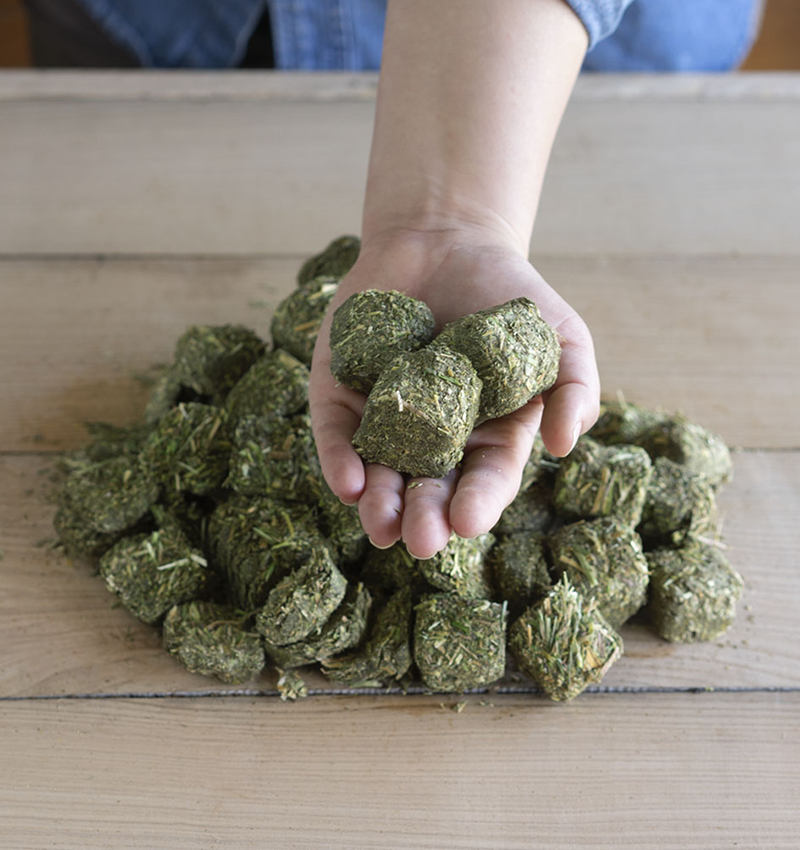
Hay Cubes: Dried, chopped hay compressed into cubes; usually contains alfalfa, timothy hay, or a mixture of the two. Hay cubes help support horses with poor teeth and improve overall forage quality by providing a consistent hay source.
Pellets: Created using a process of heat and steam on ground hay or other high-fiber ingredients. Pellets can be mixed with water to form a mash for horses that have difficulty chewing and swallowing.
Chopped Forages: Harvested at optimal maturity level and chopped to approximately 1-2 inches in length. Horses with poor teeth could be given chopped forages, and it can improve overall hay quality in the diet.
Have additional questions about hay and forage alternatives, or creating a feed plan to meet your horse’s nutritional needs? Talk to a Triple Crown Feed expert for more recommendations. www.www.triplecrownfeed.com or call 800-451-9916.
How to Take a Hay Sample
Having your horse’s hay analyzed can provide important information about the nutritional content, which can then help you develop a balanced diet with your vet, an equine nutritionist, or a Triple Crown Feed expert. Here’s how to take a sample for testing.
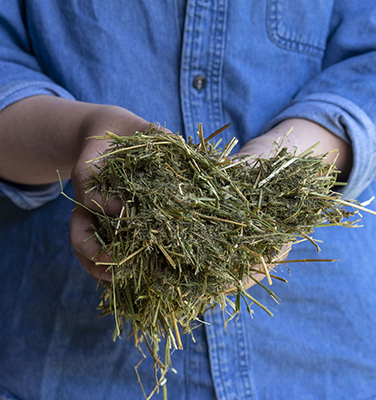
Step 1: Obtain a hay probe—this is a cylindrical tool approximately 12- to 24-inches long. Your local extension office may have one that you can borrow. Connect the hay probe to a drill or a hand brace tool.
Step 2: For each sample, get a sealable plastic bag, and write a descriptive label on the outside of the bag, including the type of hay and date.
Step 3: Probe each hay bale in the center of the short end of the hay bale between the strings. For a truly representative sample, randomly select 12-20 bales to probe.
Step 4: After the bale is probed, remove the probe from the drill and deposit the core sample into the plastic bag. Repeat for all probings.
TIP: Your sample should fill a quart-size sealable plastic bag.
Step 5: Send your sample package to a forage testing lab for analysis.

About Triple Crown Nutrition — Official USPC Feed Sponsor
Triple Crown offers premium equine feeds that provide the exact nutrition your horse needs, designed to help support immunity and gut health. Learn more at TripleCrownFeed.com.
This article about extending your horse’ hay supply and about forage alternatives was originally published in the Fall/Winter 2022 issue of Discover USPC magazine. Read more content from that issue.




